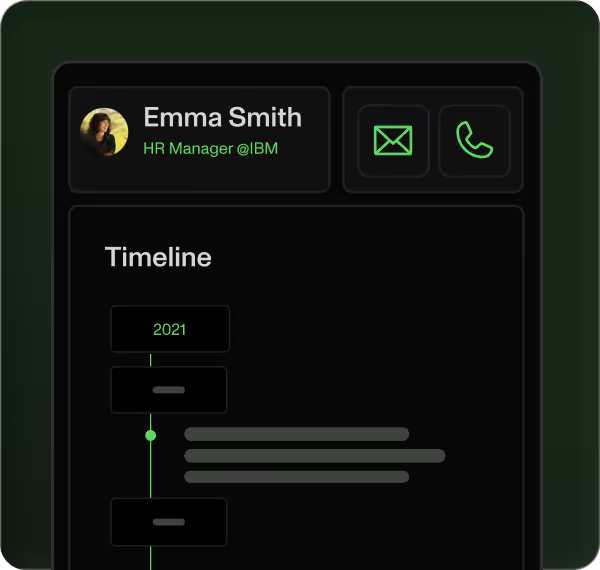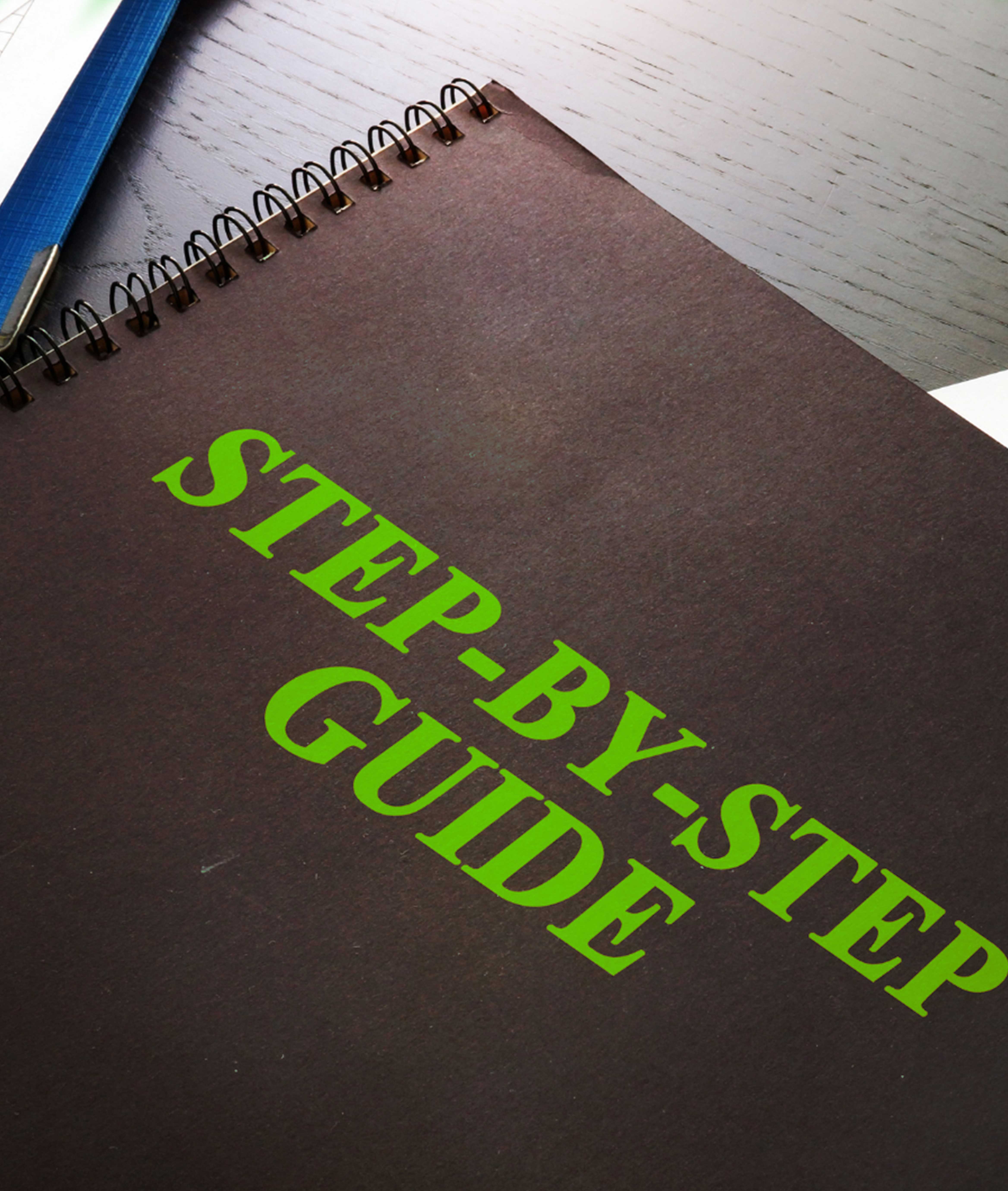Sales prospecting is what keeps the pipeline full, when inbound slows down. Sales prospecting involves identifying the right prospect, qualifying them with data-rich insight, and positioning your product or service to match their needs.-It’s what gives your team control, because waiting on form fills isn’t a strategy.
This guide explains how outbound tactics become powerful tools for generating deals and building pipelines when inbound media and marketing efforts slow.
Outbound prospecting works when it’s structured around clear ICP, messaging strategy, and follow‑up plan. When reps understand your ideal buyer persona, the challenges your offering addresses, and how to deliver value at the right moment. But too often, prospecting means guesswork:
- Messy lists.
- Bad data.
- Inconsistent follow-ups.
Without a plan to segment and analyze companies, or track each recipient’s journey, prospect engagement drops and communication becomes scattered.
Whether you’re building your first outbound team or scaling your sales development function, this article equips salespeople with proven techniques, campaign strategies, and software‑friendly workflows to generate qualified opportunities, improve conversion rates, and close more deals.
What is sales prospecting?
Prospecting is the structured process of identifying, researching, and engaging potential customers who match your ideal customer profile (ICP), with the purpose of generating valuable business conversations with potential clients.
Effective prospecting starts with clarity:
- Know your ICP: Company size and industry, job roles, pain points, buying triggers.
- Research before outreach: Use intent data, tech stack info, funding news…that signal context.
- Execute a multi-touch flow: Cold call, email, LinkedIn connect.
First step: spend time reviewing your current customers. Identify the traits shared by your ideal buyers: industry, size, team structure. Then choose 3–5 representative personas and list their key challenges. This clarity will influence every outreach step.
%3Aformat(webp).webp)
What sales prospecting is not
Sales prospecting isn’t about blasting 500 identical emails to an unqualified prospect list or using poor-quality buys. It’s not calling random numbers without context. And it’s definitely not automating your way into someone’s inbox without bothering to check who they are.
That isn’t outreach: it’s noise that dilutes your brand and wastes budget. Real prospecting? You need to know who you’re reaching out to, have at least one reason they might care, and put in enough effort to not sound like a robot. You must analyze each recipient, tailor value messaging aligned with product or business pain points, and ensure your pitch resonates.
If your message feels like it could’ve gone to 200 other people, don’t be surprised when it gets ignored. That approach rarely converts into real sales: they dismiss it, or worse, mark you spam.
How prospecting fits into the “bigger picture”
Lead generation, lead nurturing, sales prospecting… These terms are note the same:
- Lead generation means attracting prospects via inbound channels: SEO, paid ads, content offers.
- Lead nurturing happens when prospects already engage, like downloading content or attending webinars. This inbound media-based strategy helps warm them.
- Sales prospecting is proactive outreach to a cold audience: no prior interaction, no previous deal context. You’re reaching out cold (but smart).
Each stage has its place. But prospecting is what puts your sales team in the driver’s seat.
It acts as a bridge between marketing and sales, reigniting cold leads, whether they come from inbound campaigns or referrals. By building targeted campaign workflows and structured referral outreach, you increase engagement and qualify more leads at scale.
%3Aformat(webp).webp)
And these stages connect.
- That ebook download? If they go quiet, a BDR can take over with an outbound sequence.
- That warm lead from nurturing who never booked? They’re now a perfect target for a call.
Bonus: ensure Marketing and SDR teams align weekly on inbound leads that haven’t converted. If an MQL goes quiet after nurture, reps should follow up with a targeted outbound sequence, so no good lead is left behind.
Why prospecting matters in modern sales
Inbound is great, when it’s flowing. But it’s not always predictable. That’s where prospecting steps in: it fills the gaps, fuels momentum, and keeps your pipeline moving.
Plus:
- It shifts your efforts toward high-value companies and decision makers, not just who stumbles onto your site.
- It gives sales teams control. They're actively filling the pipeline.
- It boosts pipeline velocity.
Sales prospecting means identifying the right profile: it involves researching the account, finding and qualifying ideal prospects, then crafting personalized outreach that demonstrates real business value. When you call a freshly downloaded ebook lead, that’s not prospecting: that’s answering a hand raise.
Why sales prospecting matters
more than ever
Inbound is not enough. Buyers do their homework, shortlist vendors early, and often bypass sales until the end. Outbound prospecting puts your team back in control, by creating intent, not just reacting to it.
Buyer behavior has shifted
Buyers don’t wait for your pitch anymore: they go searching. Research shows that most prospects are already 50-60%*** through their decision-making journey before speaking to a sales rep.
They self-educate:
- They compare tools.
- They ask peers for recommendations.
And when they finally fill out a form, their shortlist is already made. That 'purchasing journey' is well underway by the time they engage, making your outbound outreach essential to surface earlier.
%3Aformat(webp).webp)
Prospecting gets you in before the shortlist. Instead of reacting to interest, your reps create it. In our digital-first world, waiting means invisibility. Especially when urgency drives decisions.
*** https://hbr.org/2015/03/making-the-consensus-sale “Our data shows that customers are, on average, 37% of the way through a purchase process by the time they reach the solution-definition stage, and 57% of the way through the process before they engage with supplier sales reps.”
ROI of structured outreach
Structured prospecting consistently drives good outcomes:
- Higher conversion potential: When outreach is tailored, it feels relevant.
- Faster sales cycles: When reps take control of the first touchpoint with clear intent, they move quicker to discovery.
- Stronger targeting: Sticking to your ICP helps you avoid wasted dials, focus on high-quality conversations, and align effort with impact.
Every message earns attention.
Prospecting gives you the edge in crowded markets
In saturated industries, everyone's competing through the same inbound channels: SEO, ads, content. It’s noisy, and standing out gets harder.
That’s where sales prospecting becomes a strategic edge. Instead of waiting for leads to show interest, your team reaches out first. Whether it’s ABM, industry-specific targeting, or signal-based outreach, structured outbound lets you engage high-potential buyers before they ever hit “search.”
How to generate qualified leads through prospecting
Prospecting is a structured process with clear outcomes. It starts by understanding where it fits in the “bigger picture”. Before you pick up the phone, you need a map: and that starts with your funnel.
1. Where prospecting fits in your funnel
Prospecting is the first intentional step in a structured sales journey: Awareness → interest → evaluation → decision → close.
Outbound prospecting is what turns a name on a list into a real opportunity.
These early touches shape everything that follows:
- From nurture emails.
- To discovery calls and product demos.
%3Aformat(webp).webp)
All of this sits inside your broader B2B sales process, so your prospecting steps stay aligned with how deals actually move to close.
2. Step-by-step approach
Here’s how to build a good prospecting flow:
Define your ideal customer profile (ICP)
Start by clarifying exactly who you want to reach. Use firmographics (industry, company size, revenue, location).
Match them with buyer personas (their role, responsibilities, and likely pain points).
Back your ICP with real customer data and closed-won case studies.
%3Aformat(webp).webp)
Identify and score the right leads
Once your ICP is set, go find the right contacts. Pull signals from your CRM, buying intent tools, tech stack data, and website activity.
Then, score them. Fit + intent = priority.
You can also qualify each prospect against clear deal criteria so reps focus on the highest-impact conversations.
%3Aformat(webp).webp)
Craft messaging that actually connects
Now personalize your outreach by persona (what they care about, how you can help).
Consistency matters. Each message (email, call openers…) should feel like part of the same conversation.
If you prefer a ready-made structure, start from a simple prospecting plan and adapt it to your market and team.
3. Best practices to keep your pipeline warm
Write like a human. For example : “Quick question on your outbound stack”
%3Aformat(webp).webp)
- Keep it simple.
- Show them you’ve done your homework.
- Get to the point fast.
Use a proven multichannel cadence:
- Day 1: LinkedIn connection request with a personalized note.
- Day 2: Follow-up email with a short insight or relevant question.
- Day 3: Cold call referencing your previous touchpoints.
Each touch should feel like a continuation:
%3Aformat(webp).webp)
Test, learn, and refine.Try different opening questions. Adjust timing between touches.Keep your system agile, because prospecting is a moving target.
Proven prospecting techniques that actually land meetings
A strong sales pipeline is built with a strategy that layers techniques. Below are 5 key tactics, each grounded in real-world practice.
1. Cold calling that cuts through
“An SDR calls the Head of Sales at a mid-market CRM company. After introducing themselves, they mention noticing the team recently posted multiple SDR job openings, and ask how they’re managing outbound and tooling.”
Why it works: It shows you’ve done your homework. By referencing real hiring activity, you make your call timely, and hard to ignore. That call can lead directly to a meaningful conversation and later a closed deal, showing how a simple insight can position your service effectively.
How to do it well:
- Open soft: “Did I catch you at a bad time?”
- Link with your research: “Saw, you’re hiring SDRs, curious how you’re handling tooling?”
- Deliver value: “Zeliq centralizes your outbound ops in one workspace.”
- Land the ask: “Would a 15-min demo be useful for your team?”
%3Aformat(webp).webp)
To make this repeatable, build your own playbook using battle-tested cold calling techniques and a proven cold call script your team can adapt by persona.
2. Cold emails that feel warm
“A rep emails the Head of RevOps at a $10M ARR SaaS, referencing a podcast where they mentioned data hygiene issues. In the follow-up, he shares a case study on pipeline leakage due to fragmented prospecting tools. On email three, the prospect replies: ‘This hits home. Let’s talk.’”
Why it works: The email shows clear listening and relevance. The message resonates — without feeling automated.
What to include:
- Personal reference: something they said, posted, or shared.
- Contextual link to your solution: “This case reminded me of what you said on [Podcast X]”.
- Social proof: relevant client name or result.
- CTA: “Want to unpack this in a short call?”
%3Aformat(webp).webp)
3. LinkedIn outreach with intent
“Using LinkedIn Sales Navigator, a BDR filters for Revenue Operations leads in B2B SaaS firms using HubSpot. They send a tailored connection request mentioning a recent webinar the prospect attended. A week later, they follow up with a short DM linking a relevant outbound playbook.”
Why it works:Referencing a shared event makes the outreach warmer, and the resource feels like a helpful nudge, not a pitch.
Smart plays:
- Filter smart: ICP fit + tech stack + engagement signals.
- Mention shared context: “Spotted you in the [Webinar X] attendee list”.
- Add value in the DM: “Thought this playbook might spark ideas based on that session”.
%3Aformat(webp).webp)
4. Social selling that builds trust
“A rep comments on a hiring announcement for new SDRs at a target company. They keep engaging over a few posts and later share a relevant blog post on onboarding workflows via direct message. The Head of Enablement replies and asks for a quick chat.”
Why it works: By joining the conversation naturally, you’re not pitching cold: you’re participating. Then, share a content that fits their situation.
Tactics to try:
- Monitor hiring posts and team milestones.
- Engage genuinely: comment with perspective.
- Follow up with helpful content tied to what they’re building.
- Let them ask for the meeting.
%3Aformat(webp).webp)
5. Referral prospecting that multiplies wins
“After a successful onboarding with a Head of Growth, the SDR asks if there are peers in their portfolio companies or founder network who might be scaling outbound. The client introduces them to a fellow Head of Sales, leading to a discovery call the same week.”
Why it works:When you ask at the right moment, happy customers are often glad to open doors.
What to do:
- Time your ask after successful onboarding.
- Be specific: “Do you know any Heads of Sales in your portfolio tackling outbound scale?”
- Follow up quickly and personally.
- Signal credibility from the start: “Jordan mentioned you’re scaling fast, thought I’d reach out”.
%3Aformat(webp).webp)
Building a high-impact prospecting process
Great prospecting is about having a system, powered by clean data, precise messaging, and tools that keep your workflow efficient.
Here’s how to build a process that reps actually follow:
%3Aformat(webp).webp)
Start with structured data and prospect lists
Many teams start with tools like ZoomInfo or Clearbit to pull lists aligned with their firmographics, technographics, and intent signals.
That data gives you access to the right accounts:
- Define your ICP before importing lists.
- Enrich contact info with verified details (phone, email, LinkedIn URL).
- Segment by role, geography, or sector.
- Clean and refresh data regularly.
This step keeps your outreach focused, targeted, and accurate. But it’s just the start.
Write personalized cold email sequences
Automation doesn’t mean generic. Personalization matters.
- Use a clear cadence: a thoughtful first email, a social touch (LinkedIn).
- Run A/B tests on the subject line.
- Personalize with dynamic fields when possible.
%3Aformat(webp).webp)
“I saw you’re scaling your [department], curious how you’re handling [challenge]”
Manage responses in a CRM or in ZELIQ
To convert conversations into qualified opportunities, you need a centralized system that tracks every touchpoint, triggers follow-ups, and keeps your reps focused.
Prospecting tools and a CRM might get the job done, but ZELIQ does it all.Instead of switching between multiple tools, reps manage everything in one unified platform:
- Log every interaction: emails, replies, connections…
- Trigger next steps: sending resources, launching a voicemail cadence, assigning a follow-up.
- Sort leads by behavior and intent.
%3Aformat(webp).webp)
Optimize your prospecting cycle
Continuous improvement keeps your process sharp:
- Track key metrics.
- Identify trends (which messaging outperform others?).
- Monitor performance.
This approach helps you turn prospecting into a predictable pipeline engine, built from data-driven targeting and real-time optimization.
Top sales prospecting tools (and why all-in-one wins)
The best sales teams choose all-in-one platforms, because juggling multiple tools slows everything down. Switching tabs, copying data, missing follow-ups… it wastes time and creates gaps. A unified process keeps everything on track, in one place.
Tool fragmentation slows you down
When your prospecting stack is spread across five tools, you don’t just lose time: you lose deals.
- Reps waste time switching tabs, jumping between inboxes, CRMs, and analytics dashboards.
- Signals get lost: an email open in one app doesn’t update scores in another.
- Manual updates delay follow-ups.
%3Aformat(webp).webp)
Quick checklist to audit your current stack
Most teams don’t know how many tools they’re actually using. Or why.
So before adding one more to the mix, take five minutes and ask yourself:
- Do your tools talk to each other? Or are reps copy-pasting from screen to screen?
- Got two tools doing the same thing?
- Which one slows people down? Not in theory, in real life, during prospecting.
- Can anyone on your team actually follow a lead’s full journey? From start to finish?
If a few of these questions hit a nerve, maybe it’s time for a cleanup.
Why does an all-in-one platform win?
Because an all-in-one platform, like ZELIQ, is more than a time-saver:
- It eliminates tool overload. No more juggling between CRM, enrichment platforms, Linkedin Sales Navigator…
- It gives full data visibility. Every touchpoint is tracked.
- It adapts sequences. Workflows adjust, based on real-time prospect behavior.
- It enables centralized coaching. Managers get instant access to performance insights.
Consolidating your prospecting stack into a single platform unlocks more efficiency, and better results. By centralizing your prospecting efforts, you increase the chances of moving each prospect from cold contact to qualified opportunity, without losing momentum or visibility.
%3Aformat(webp).webp)
How to automate and scale your prospecting strategy
You can scale by removing friction, adding structure, and letting automation do the heavy lifting. Automation doesn’t replace sales reps, it empowers them to focus where they’re most effective: building real relationships.
Good automation helps identify the right decision makers early, ensures each touchpoint is relevant, and lets your team focus on building the kind of conversations that actually convert.
Reduce repetitive tasks with automation
Smart automation removes the manual, repetitive part of outreach:
- Trigger a LinkedIn follow-up when a prospect opens or replies to an email.
- Automatically send a reminder email after a call without a booked next step.
- Log call outcomes and move contacts through cadence stages accordingly.
- Tag leads dynamically when they engage with a piece of content.
Maintain the human element
Personalized prospecting still wins. Automation clears the way.
- Let automation handle value-first nudges, and bring the rep in when a reply or signal warrants it.
- Keep the human touch on live calls, but automate scheduling and reminders.
- Use dynamic personalization tokens (name, company, pain point) to keep messaging warm even at scale.
Leverage multi-channel workflows
With ZELIQ, multichannel prospecting is seamless.
- Set up automated flows across email, LinkedIn and phone.
- Post-call automations launch the right follow-up (targeted email, LinkedIn connection…).
- Use priority queuing to fast-track hot leads.
ZELIQ orchestrates intelligent sequences that meet prospects where they are.
Scale efficiently
Scaling means tracking what works, and evolving what doesn’t.
- Use dashboards to spot what’s converting.
- Run A/B tests on different timing channels and messaging angles.
- Let automated CRM updates keep your pipeline clean and current.
- Deploy proven sequences with role-based templates.
Scaling isn’t about volume, it’s about building predictable systems that generate deals and develop real sales opportunities. Your prospecting has to become a system, not just an activity.
Overcoming common sales prospecting challenges
Even experienced sales teams face challenges when it comes to prospecting: from reaching the right contact to maintaining data accuracy.
These challenges can slow your sales funnel and reduce your team’s ability to drive direct conversations that lead to closing deals. With the right tools and methods, it’s possible to fix these problems and make prospecting more effective.
Here’s how to address the most common prospecting challenges:
Gatekeepers
Gatekeepers are “filters”. Treating them with respect changes the game.
- Use quick social-proof openers to establish credibility.
- Acknowledge their role: “I imagine you get a lot of these, mind pointing me in the right direction?”
The goal? Make them your ally, not your adversary.
When you connect with the right person early, the difference in qualifying quickly vs. waiting in limbo becomes a game-changer.
Poor lead quality
Sales teams often waste precious effort following unqualified contacts. ZELIQ helps fix that, by making sure only high-fit prospects make it into your sequences:
- Filters out contacts that don’t match your ICP.
- Enriches profiles in real time with verified titles, and emails.
- Refines your lead pool with behavior-based triggers (opens, site visits, LinkedIn views).
High effort for low return
Reps hate admin. Every minute spent logging calls, copying data, or switching tabs is a minute not spent selling. And over time, that adds up to fewer conversations and slower pipeline.
Without automation, reps waste time on these repetitive tasks. ZELIQ removes that friction by automating sequences, follow-ups, and contact logging: so they focus on conversations, not busywork.
- All outreach (email, call, LinkedIn) happens in one platform.
- Less back-and-forth between tools.
- More time for high-impact activities, less effort on admin.
%3Aformat(webp).webp)
Lack of data consistency
Disconnected tools lead to broken pipelines, and lost context.
- ZELIQ centralizes all outreach.
- Managers get real-time dashboards.
- Response histories are easy to audit.
When prospect and client data lives in one place, your team stays on the same page and ready to move forward.
%3Aformat(webp).webp)
Measuring and improving sales prospecting results
To drive better, faster, and more targeted prospecting, your sales team needs to track what’s working and double down.
Hold a monthly pipeline review, where reps and managers share top-performing sequences, objection patterns, and rate metrics. Use this time to realign on ICP segments and test new subject lines or personas.
Here’s how to measure the impact of your outreach:
Set a review rhythm
First of all: no fancy dashboards will help if no one’s looking at them.
Build a simple review habit your team can stick to. Start small:
- Weekly: quick check-in on open and reply rates. What’s catching attention, what’s not?
- Monthly: review top and bottom sequences. Focus on ICP fit. Kill what’s stale.
- Quarterly: test something new. A fresh segment, a bold subject line, a different CTA.
You don’t need a full revamp every time. Just a regular moment to ask: is this still working? And if not: what’s next?
Track email open and reply rates
Your email metrics are the first signal of how well your message is landing. Here are the key KPIs to track:
- Open rate: offers insight into the effectiveness of your subject lines and send timing.
- Reply rate: indicates how relevant and compelling your message is to each prospect.
- Persona/segment/industry performance: compare results across these dimensions to fine-tune your messaging.
Bonus: use ZELIQ’s real-time dashboards to track performance by rep, sequence, or template.
%3Aformat(webp).webp)
Track booking rates
Meetings booked is the clearest indicator your outreach is working.
- Measure the conversion from contact to conversation.
- Use ZELIQ to compare booking efficiency across SDRs, sequences, and ICPs.
Track sales pipeline velocity
- Measure how quickly leads move from first contact to next step.
- Identify where friction occurs: bad CTAs, long silences, too many touches.
- ZELIQ tracks each interaction and how fast leads move through your pipeline.
Prospecting success isn’t random, it’s repeatable. You need visibility to see what truly drives results.
%3Aformat(webp).webp)
Conclusion
Prospecting isn’t just a daily to-do, it’s the foundation of your pipeline.
High-impact prospecting takes structure, clarity, and consistency. This guide walked you through every part of the process:
- How to define and find your ICP.
- How to build sequences that feel relevant, not robotic.
- How to use real data to score leads, prioritize actions, and scale what works.
Jumping between 5 different tools slows your reps down. A single, all-in-one platform keeps your workflow efficient, from the first email to the booked meeting.
The best teams treat prospecting like a system, not like a “volume game”. They test, tweak, and improve.
→ With ZELIQ, that system is already built. One platform to:
- Track signals.
- Automate follow-ups.
- Enrich contacts in real time.
- Measure performance by rep, persona, or sequence.
So your team spends less time chasing, and more time converting.
If your current prospecting feels manual, scattered, or inefficient, now’s the time to upgrade. Want a sales pipeline that runs on strategy?
Try ZELIQ free and start turning cold leads into booked meetings.
Enter the future of lead gen

Table of contents
Placeholder Title
Table of contents
Placeholder Title
Placeholder Title
Download our full case study ebook!











